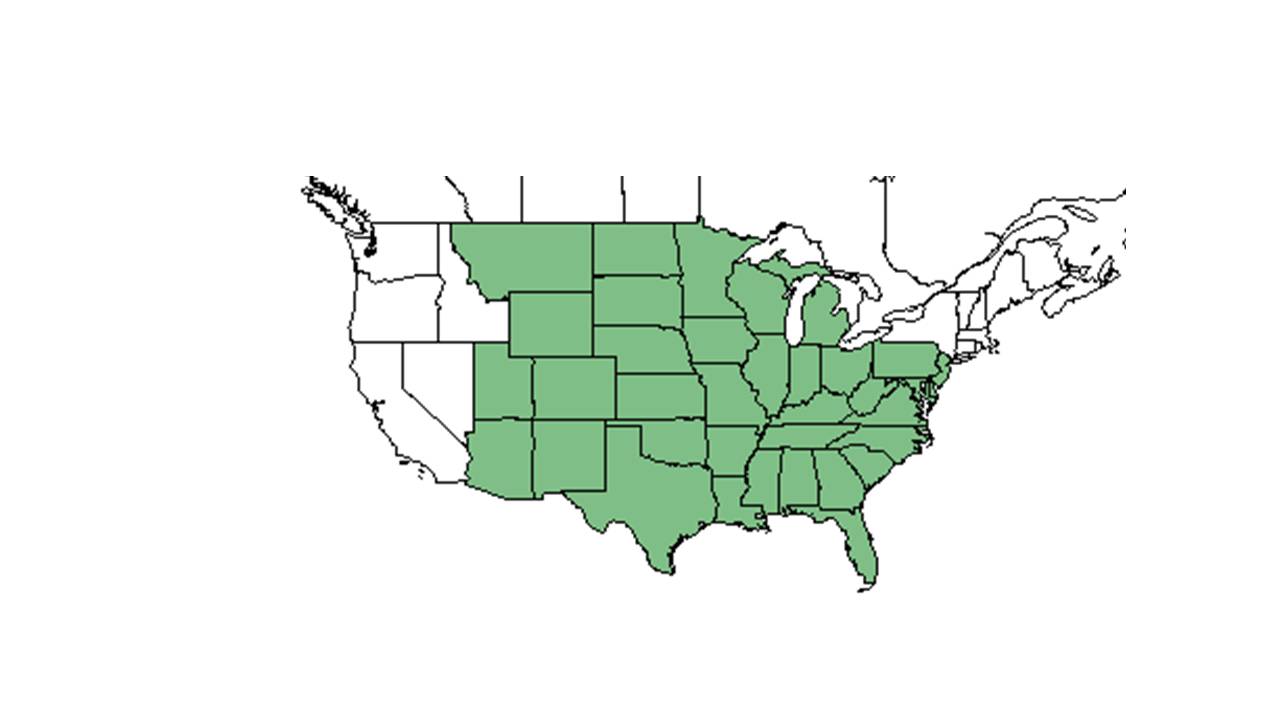Difference between revisions of "Brickellia eupatorioides"
| Line 21: | Line 21: | ||
==Distribution== | ==Distribution== | ||
==Ecology== | ==Ecology== | ||
| + | Mycorrhizal relationships seemed to yield significantly higher phosphorous levels.<ref name="Kula et al 2005"/> | ||
===Habitat=== <!--Natural communities, human disturbed habitats, topography, hydrology, soils, light, fire regime requirements for removal of competition, etc.--> | ===Habitat=== <!--Natural communities, human disturbed habitats, topography, hydrology, soils, light, fire regime requirements for removal of competition, etc.--> | ||
| + | It is common in grassland communities.<ref name="Bahm et al 2011"/> It is especially dominant in the tallgrass prairie.<ref>Towne 2002 cited by Kula et al 2005.More citation needed.</ref> It is also found in loblolly pine communities.<ref name="Miller et al 1999">Miller, J. H. and K. V. Miller (1999). Forest plants of the southeast, and their wildlife uses Champaign, IL, Southern Weed Science Society.</ref> | ||
===Phenology=== <!--Timing off flowering, fruiting, seed dispersal, and environmental triggers. Cite PanFlora website if appropriate: http://www.gilnelson.com/PanFlora/ --> | ===Phenology=== <!--Timing off flowering, fruiting, seed dispersal, and environmental triggers. Cite PanFlora website if appropriate: http://www.gilnelson.com/PanFlora/ --> | ||
===Seed dispersal=== | ===Seed dispersal=== | ||
===Seed bank and germination=== | ===Seed bank and germination=== | ||
| + | It germinates well at 18-22 degrees Celsius.<ref name="Kula et al 2005">Kula, A. A. R., D. C. Hartnett, et al. (2005). "Effects of mycorrhizal symbiosis on tallgrass prairie plant-herbivore interactions." Ecology Letters 8: 61-69.</ref> | ||
===Fire ecology=== <!--Fire tolerance, fire dependence, adaptive fire responses--> | ===Fire ecology=== <!--Fire tolerance, fire dependence, adaptive fire responses--> | ||
| + | It is fire-tolerant.<ref name="Bahm et al 2011">Bahm, M. A., T. G. Barnes, et al. (2011). "Herbicide and fire effects on smooth brome (Bromus inermis) and Kentucky bluegrass (Poa pratensis) in invaded prairie remnants." Invasive Plant Science and Management 4: 189-197.</ref> | ||
===Pollination=== | ===Pollination=== | ||
===Use by animals=== <!--Herbivory, granivory, insect hosting, etc.--> | ===Use by animals=== <!--Herbivory, granivory, insect hosting, etc.--> | ||
Revision as of 14:14, 10 June 2015
| Brickellia eupatorioides | |
|---|---|
Error creating thumbnail: Unable to save thumbnail to destination
| |
| Scientific classification | |
| Kingdom: | Plantae |
| Division: | Magnoliophyta - Flowering plants |
| Class: | Magnoliopsida - Dicotyledons |
| Order: | Asterales |
| Family: | Asteraceae ⁄ Compositae |
| Genus: | Brickellia |
| Species: | B. eupatorioides |
| Binomial name | |
| Brickellia eupatorioides (L.) Shinners | |

| |
| Natural range of Brickellia eupatorioides from USDA NRCS Plants Database. | |
Contents
Description
Distribution
Ecology
Mycorrhizal relationships seemed to yield significantly higher phosphorous levels.[1]
Habitat
It is common in grassland communities.[2] It is especially dominant in the tallgrass prairie.[3] It is also found in loblolly pine communities.[4]
Phenology
Seed dispersal
Seed bank and germination
It germinates well at 18-22 degrees Celsius.[1]
Fire ecology
It is fire-tolerant.[2]
Pollination
Use by animals
Diseases and parasites
Conservation and Management
Cultivation and restoration
References and notes
Photo Gallery
- ↑ 1.0 1.1 Kula, A. A. R., D. C. Hartnett, et al. (2005). "Effects of mycorrhizal symbiosis on tallgrass prairie plant-herbivore interactions." Ecology Letters 8: 61-69.
- ↑ 2.0 2.1 Bahm, M. A., T. G. Barnes, et al. (2011). "Herbicide and fire effects on smooth brome (Bromus inermis) and Kentucky bluegrass (Poa pratensis) in invaded prairie remnants." Invasive Plant Science and Management 4: 189-197.
- ↑ Towne 2002 cited by Kula et al 2005.More citation needed.
- ↑ Miller, J. H. and K. V. Miller (1999). Forest plants of the southeast, and their wildlife uses Champaign, IL, Southern Weed Science Society.